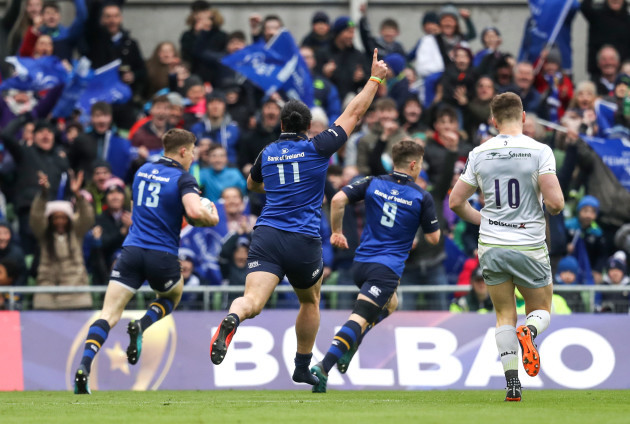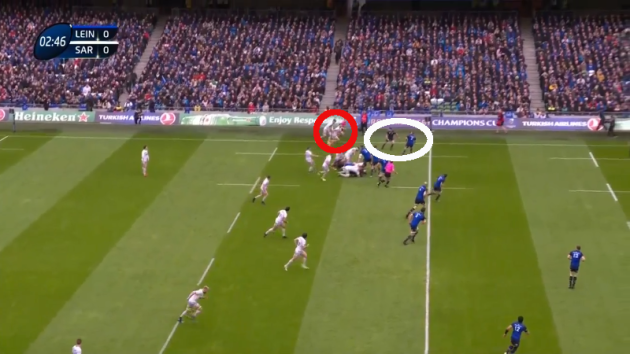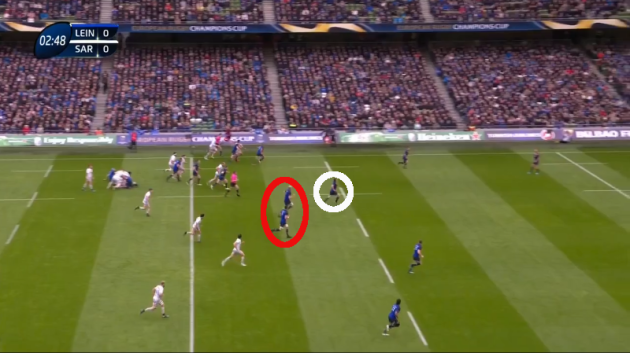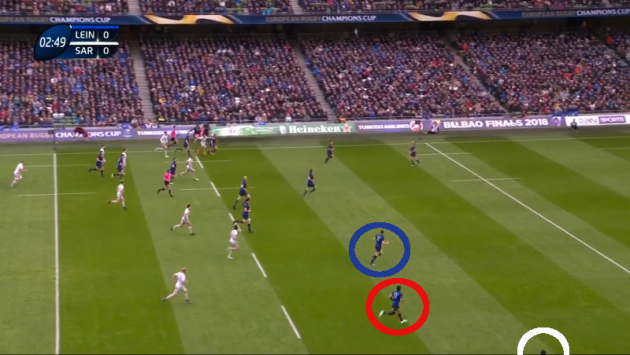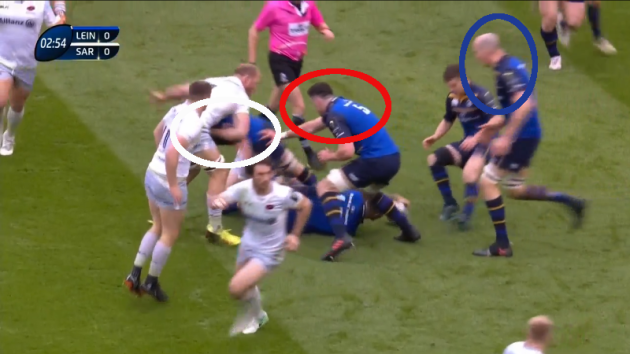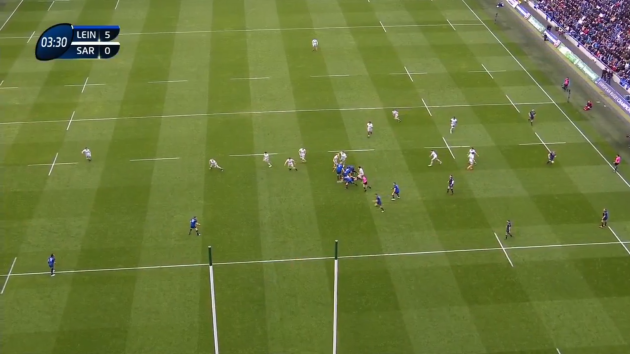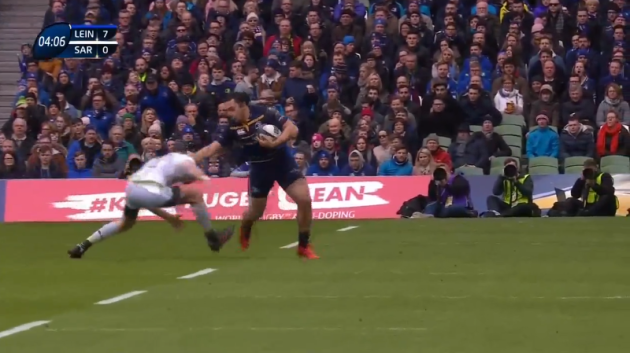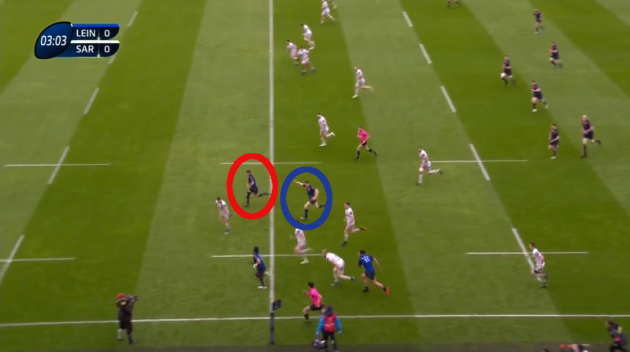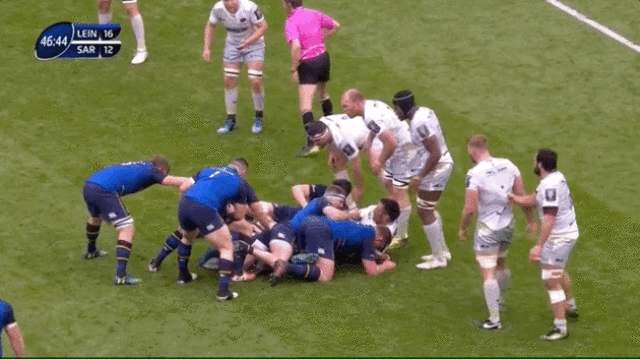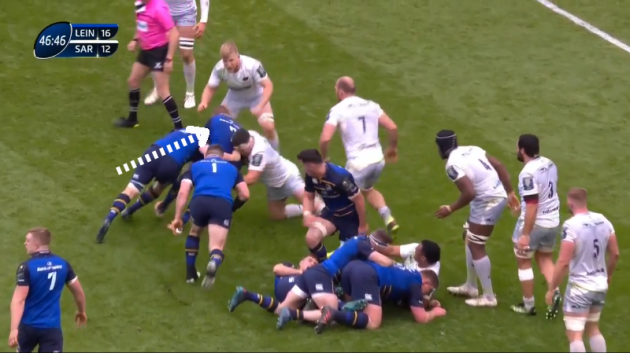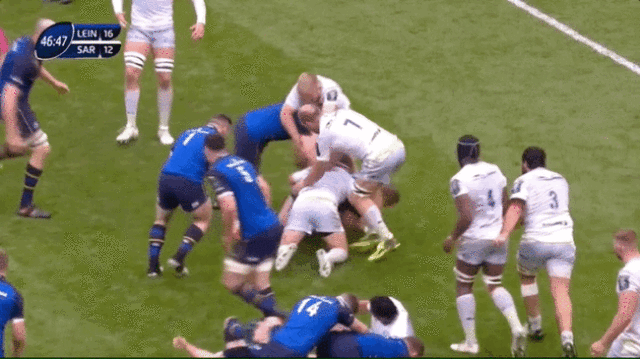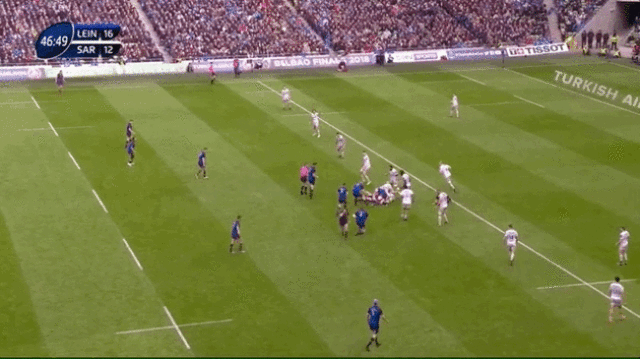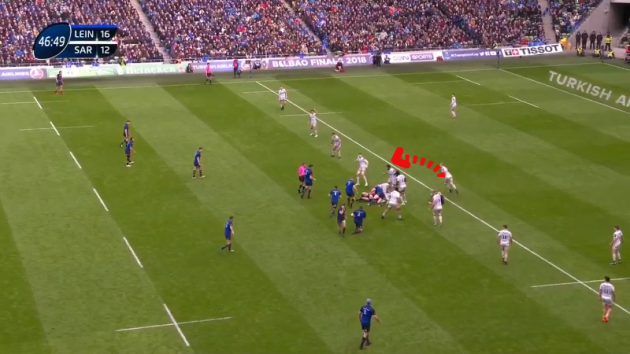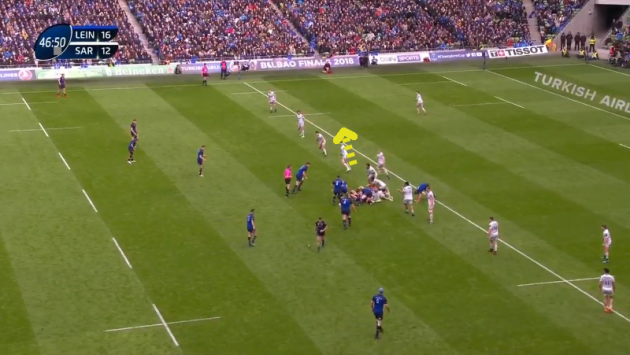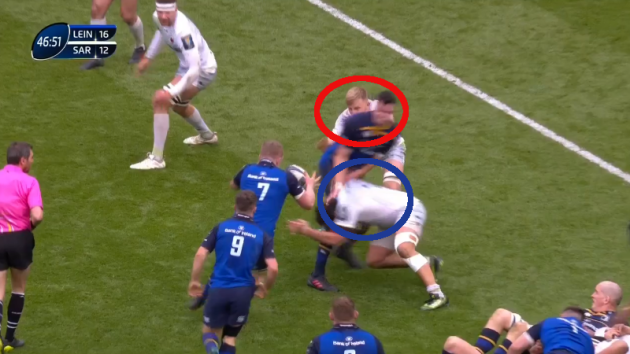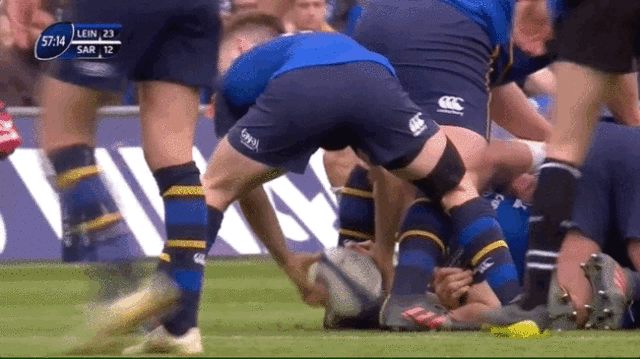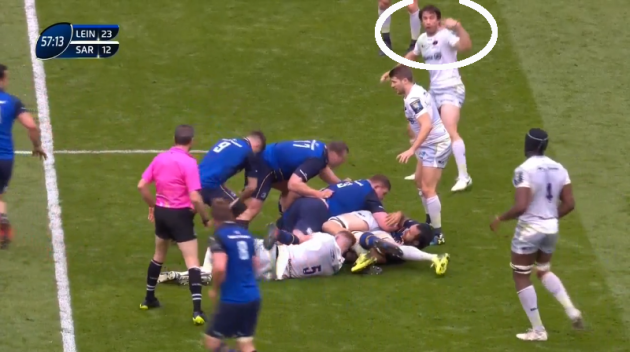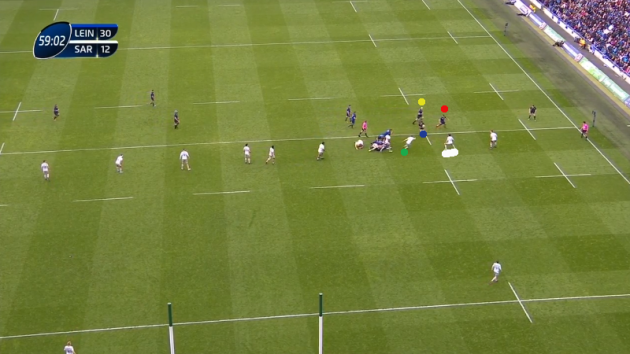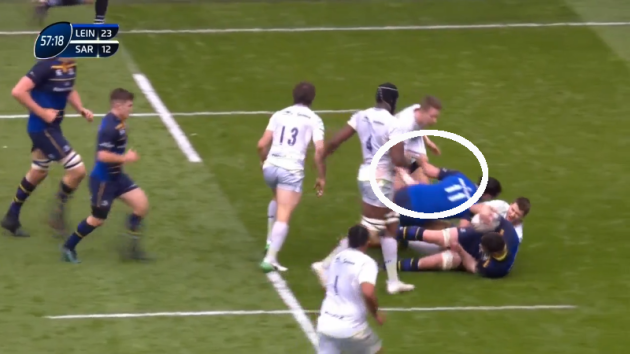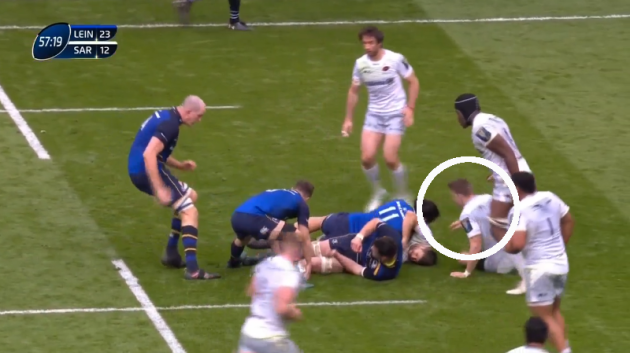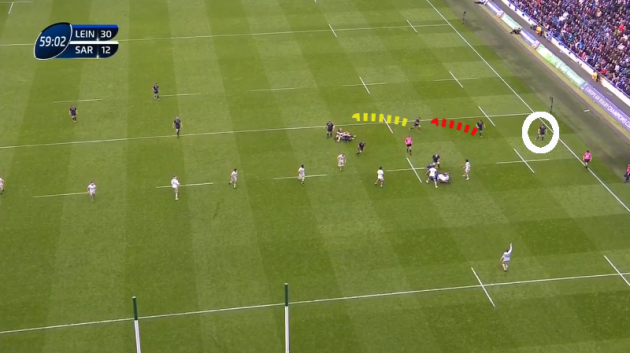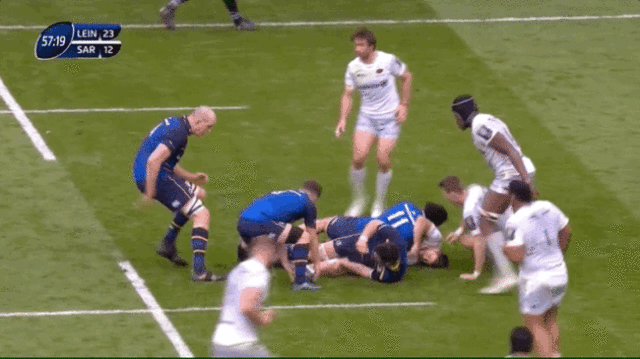UNDER STUART LANCASTER and Leo Cullen, Leinster aim to be a truly complete rugby team.
Their goal is to be able to beat teams in many different ways. Forward domination, kicking pressure, set-piece strikes, rock-solid defending, retaining the ball through high phases – Leinster strive to be capable of doing all of these things and more.
Lancaster is very open about how he guides Leinster tactically. He has spoken publicly about having examined the very distinctive styles of other teams in the Northern Hemisphere and wanting Leinster to be a blend of them.
Teams like Munster and Saracens focus on elements like kick-chase, the set-piece and bossing territory.
Other sides such as the Exeter Chiefs aim to hold onto the ball for long periods, playing out of their own half.
And intelligent teams like Joe Schmidt’s Ireland use patterned attacking play and have a very analytical slant, executing clever set-piece ‘powerplays’ to particularly good effect.
When Lancaster joined Leinster and looked at their enviable squad, he saw a group of players who could do all of these things and more. And the evidence on the pitch suggests that the province are moving towards being a complete force.
While there are still many hurdles ahead, Leinster appear to be the best team in Europe at present.
Sunday’s 30-19 victory over Saracens in the Champions Cup quarter-finals was the latest evidence and underlined just how comfortable Leinster are at making decisions and breaking down defences in less structured situations.
We have seen them dominate opposition packs [think Glasgow away in the pool stages], deliver ferocious defensive performances [the Exeter ties], and cut loose with creative attacking play [Glasgow at home] – real variety.
Against Sarries, all three of Leinster’s tries came on kick return possession to highlight just how important Lancaster’s oft-mentioned training-ground focus on the unstructured side of rugby has been.
Saracens had a greater share of possession in this game [a total time of 22:03 with the ball, compared to Leinster's 19:45] but it was the Irish team who led the way in terms of linebreaks, 12-8.
Here, we examine what helped them to be so clinical.
Ringrose rounds it off
Leinster’s first try came in the fourth minute and while a missed tackle from Liam Williams played a central role, there was so much to like about the attacking play.
Click here if you cannot view the clip above
Leinster place a premium on their off-the-ball work and the clip above highlights plenty of that.
While Richard Wigglesworth’s kick goes long and it’s unlikely that Saracens would have been in a position to compete in the air, it’s worth highlighting the work from Fergus McFadden and Sean Cronin to slow the chase.
Sean Maitland [red above] is the primary chaser for Saracens and we can see that McFadden and Cronin [white] are looking at him even after Wigglesworth has kicked the ball.
McFadden and Cronin’s job is to ‘shepherd’ Maitland, doing as much as they legally can to delay his chase, therefore giving Rob Kearney time to catch and return the Saracens kick.
McFadden and Cronin are subtle in their actions, but the clip shows us how they deny Maitland a chance to sprint directly towards Kearney.
As that is happening, there’s good work-rate from lock pair Devin Toner and James Ryan [red below] and, particularly, back row Jordi Murphy [red] to get back downfield.
That early hard work means all three are in prime position to support Kearney when he catches the kick and runs back at Saracens.
To Leinster’s left, some of the outside backs are retreating too. Importantly, James Lowe [white below], Isa Nacewa [red] and Garry Ringrose [blue] keep width across the pitch, meaning that Leinster are a threat wide on the left.
Kearney carries back at Saracens, twice stepping off his right foot before dummying a pass and making a positive carry into the tackle of Brad Barritt.
Having worked hard, Murphy [white below], Ryan [red] and Toner [blue] are there to resource the ruck.
That means lightning-quick possession for Leinster on the second phase of their possession and the benefit of their backs having kept width to the left is obvious.
The show below gives us a nice view of what the Saracens defence is facing.
With Lowe out of shot on the wide left to consider also, the threat on that side of the pitch is obvious.
But it’s worth noting that Leinster have bodies to the right of the ruck too, with Dan Leavy and Scott Fardy still working back to that edge having been involved in the ruck just before Wigglesworth’s kick.
Lancaster wants Leinster to be a threat on both sides of the ruck at all times and while the left side is the obvious option here, there is a possibility to the right too as Saracens attempt to organise themselves in defence.
McGrath moves the ball left and it’s somewhat pleasing for Leinster that Johnny Sexton is not the first receiver running the show here.
Click here if you cannot view the clip above
Ringrose accepts the excellent long pass from McGrath and instantly swivels to fire his own pass to Nacewa, understanding the need to get the ball out to space quickly.
Nacewa does something similar and now Lowe has a clear one-on-one against Liam Williams.
While an overlap would obviously be better, this kind of one-on-one in space is relatively rare at the top levels of the game, and Lowe thrives with this kind of opportunity.
With Williams already drifting across, Lowe accentuates his advantage by stepping further towards the touchline and driving out a right-handed fend.
While the fend slips up over Williams’ shoulder, Lowe’s footwork means that the Saracens wing is not planting his lead leg close to the ball carrier’s body, and he therefore struggles to get his shoulder onto Lowe.
It still takes that typical strength and leg drive from Lowe to hitch through the tackle, but Williams is left only with Lowe’s right boot after looking to cling onto the Leinster man’s foot.
Lowe finds the acceleration to get beyond Jackson Wray too – again looking to fend – and offloads one-handed back inside to Nacewa.
It’s positive support play from Nacewa to be ready to accept the offload and further inside the centre, we can see Ringrose [blue below] and McGrath [red] staying alive too.
The shot above is before Lowe has even beaten Williams out on the edge, but it’s already clear that McGrath and Ringrose are taking off on their pre-emptive support lines.
Leinster are huge on their players staying alive and running upfield in the expectation of getting a second touch.
The early effort from McGrath and Ringose means they’re well positioned to support Nacewa on the inside after he bursts onto Lowe’s offload.
Indeed, we can see above that McGrath is actually slightly ahead of the ball, so accurate has his support line been.
Instead of passing early, 35-year-old Nacewa backs his pace to beat the sweeping Wigglesworth, underlining just how evergreen he is as he speeds forward and gets a right-handed fend out too.
Click here if you cannot view the clip above
With Ringrose and McGrath in support, Nacewa then has time to draw in Saracens fullback Alex Goode and pass inside to his centre partner.
It’s worth noting that Leinster’s support play enthusiasm extends to the one-booted Lowe, who has continued to work upfield after his offload.
It means that Ringrose can run the try in with two extra bodies in support, a real statement of Leinster’s quality in that aspect of the game.
Leavy’s impact
Leinster’s second try also originates with a kick return – Saracens having cleared their lines after an excellent touch-finding grubber kick from Ringrose – and the build-up features some excellent ball-carrying, aggressive ruck work and a Leavy offload.
Their attack has been slowed by the sixth phase, but an excellent pick and jam from hooker Cronin gets them back onto the front foot.
Click here if you cannot view the clip above
Cronin’s acceleration and power is the key here obviously, but Murphy’s work is strong too.
He latches onto Cronin, as indicated in white below.
That creates a two-on-one situation against tackler Jamie George and helps Cronin to win the collision, powering onto the front foot.
Wray looks to assist the tackle for Saracens, but Murphy drives him deep beyond the tackle, stopping just early enough to ensure he doesn’t draw the match officials’ attention. This action from Murphy will prove key.
For the second time in quick succession, Schalk Burger is a turnover threat to Leinster’s ball, as we can see below.
But Cian Healy, dipping in underneath Burger’s left shoulder, and second arrival Toner, driving aggressively into Burger’s back, combine to remove him successfully.
Scrum-half McGrath has carried the ball just before Cronin’s pick and jam, meaning he is slightly delayed in getting to this ruck, but Leavy is certainly not put off by having to act as the makeshift scrum-half.
Leinster’s forwards are all comfortable in handling the ball, and Leavy wants to maintain the tempo of their attack.
McGrath is just behind him, but Leavy scoops the ball and hits James Ryan to his left.
Click here if you cannot view the clip above
The quality of Ryan’s handling here is superb, as he accepts the pass and hits Leavy back on the inside in the space of two steps.
Defensively, it’s poor from Saracens.
The ‘pillar’ at the edge of the ruck, in this case, is tighthead prop Juan Figallo. For most teams, that pillar is tasked with holding the space on the edge of the ruck – in case of late inside passes of this nature.
It’s poor decision-making but Leinster’s own good work contributes. We’ve noted how Murphy cleared Wray deep behind the ruck and Wray then has to race back into the defensive line to Figallo’s right – as indicated in red below.
As Wray is coming forward, Saracens flanker Nick Isiekwe is drifting off to the right to leave space for Wray to come into – as indicated by yellow below.
We don’t know for sure, but it seems that the communication of this shift to Figallo’s right is not clear to the tighthead.
Figallo’s peripheral vision probably picks up Isiekwe drifting right, but he obviously can’t see Wray coming forward. That would leave him feeling that there is too much space to his right and might explain why he moves straight onto Ryan rather than holding the pillar position.
It all means that Wray [red below] and Figallo [blue] are both committed to the same tackle on Ryan, leaving clear space for Leavy to accelerate into and score.
Leavy just evades the grasp of the covering Maro Itoje, whose poor decision to attempt a counter-ruck as Leavy picks the ball from the base of the ruck costs him dearly, leaving him a step behind in covering across from the left-hand side of the defensive ruck.
“Saracens had presented that picture a few times this season,” said Cullen of this try. “I thought the lads went after that space well but I think it was off the back of some strong carries.”
Indeed, it was interesting to note that in the lead-up to Ringrose’s superb grubber kick, which in turn led to the possession for Leinster to build this attack, their pick and jam tactics had major success.
Murphy and Cronin both made big yards through gaps in the pillar positions before that kick and just over two minutes later, Ryan and Leavy went after the same space.
“It was kind of spur of the moment,” said Leavy afterwards, however. “I just popped it up to Cheese [Ryan] and called for it back and the defender committed to Cheese so it was a free run-in.”
Lowe gets in on the act
Leinster’s third try also begins with the reception of a Saracens kick, with Kearney carrying off a Fergus McFadden pass, before Toner’s tip-on pass allows Murphy to make yards.
Leavy is next to carry to the left, before Ryan makes a major impact coming around the corner on fourth phase.
Click here if you cannot view the clip above
Again, there is poor defence involved here.
We can see below that Marcelo Bosch is calling for his Saracens team-mates to fold to the right of the ruck before Ryan’s carry.
However, there is no response from the Saracens defence as they are beaten for work-rate by Leinster.
As Ryan [blue dot below] comes around the corner, Bosch [white] is worried about Lowe [red] and Toner [yellow] on Ryan’s outside shoulder.
Wigglesworth [green] has to get across to Ryan from his starting position as the pillar – Itoje is arriving on Wigglesworth’s inside shoulder late – but he needs Bosch to bite in on the hit on Ryan too.
Bosch, however, is concerned about Lowe and Toner and his attempt to tackle Ryan is half-hearted, leaving the Leinster second row to demonstrate his freakish power in a mismatch against Wigglesworth.
Ryan pumps his legs aggressively and gets well beyond the gainline. The clever work of Lowe as the tackle goes to ground shouldn’t be missed.
Williams has come in towards the tackle as Ryan is making metres but he’s not part of the contact.
However, Lowe grabs onto Williams’ jersey [white above] as he is going to deck along with Ryan and pulls the Saracens wing to the ground [white below].
Naturally, that takes a defender out of the defensive line for Saracens and it makes a crucial difference on the next phase.
Again, Leinster have worked extremely hard to get around the corner to attack this shortside, as we see below.
Murphy [red] and Sexton [yellow] have sprinted hard around the corner, recognising the opportunity created by Ryan’s positive carry, while Ringrose [white] has maintained the width out on the touchline.
The hard work from Murphy and Sexton, coupled with Lowe’s intervention, leaves them with a clear three-on-one against the badly-exposed Bosch.
Click here if you cannot view the clip above
Murphy’s draw and pass skills are exemplary and, again, it’s a positive for Leinster that Sexton is not the first receiver here.
Instead, he is put through for a linebreak by his team-mate. While Williams recovers from the ground to get back and haul Sexton down, the out-half is able to offload to the supporting Jack McGrath, who carries to within five metres of Saracens’ tryline.
Ryan gets on the ball again as Leinster play infield, the second row producing another excellent carry, with Nacewa, Sexton and Murphy resourcing the ruck.
Leinster go infield again to Tadhg Furlong on the next phase – ignoring a call from Cronin to go wide right – with Leavy latching on strongly before Fardy and Toner arrive to guard the ruck.
And finally, we get the clever redirection from Leinster as McGrath bounces back against the grain to the hard-running Lowe.
Click here if you cannot view the clip above
Lowe obviously deserves credit for more of that insatiable desire to make yards even in the tackle but, again, we have to highlight the support work from Leinster here.
Lowe is initially held up in the tackle by Itoje after Figallo tackles him around the legs, but Murphy [white below], Nacewa [yellow] and Ryan [red] all hammer into Itoje.
It’s clever targetting of the tackler, rather than latching onto the ball carrier, from Leinster.
Itoje feels the brunt of their combined force and the Leinster trio viciously drive the Saracens lock completely off Lowe and over the tryline, with Lowe intelligently reaching out to dot down as he goes to ground with the momentum.
With Sexton converting, Leinster move into a 30-12 lead with a quarter of the game remaining and that advantage proves unassailable.
That each of these tries from Leinster come in situations that require players to make decisions on the move, work hard off the ball, offer strong and exuberant support play and, at times, physically dominate their opponents will have been greatly pleasing.
This three-try win over the back-to-back champions demonstrates why Leinster are clear favourites to go on and win their first title since 2012.
The victory also underlines how complete a team Lancaster and Cullen are building.
The42 is on Instagram! Tap the button below on your phone to follow us!
